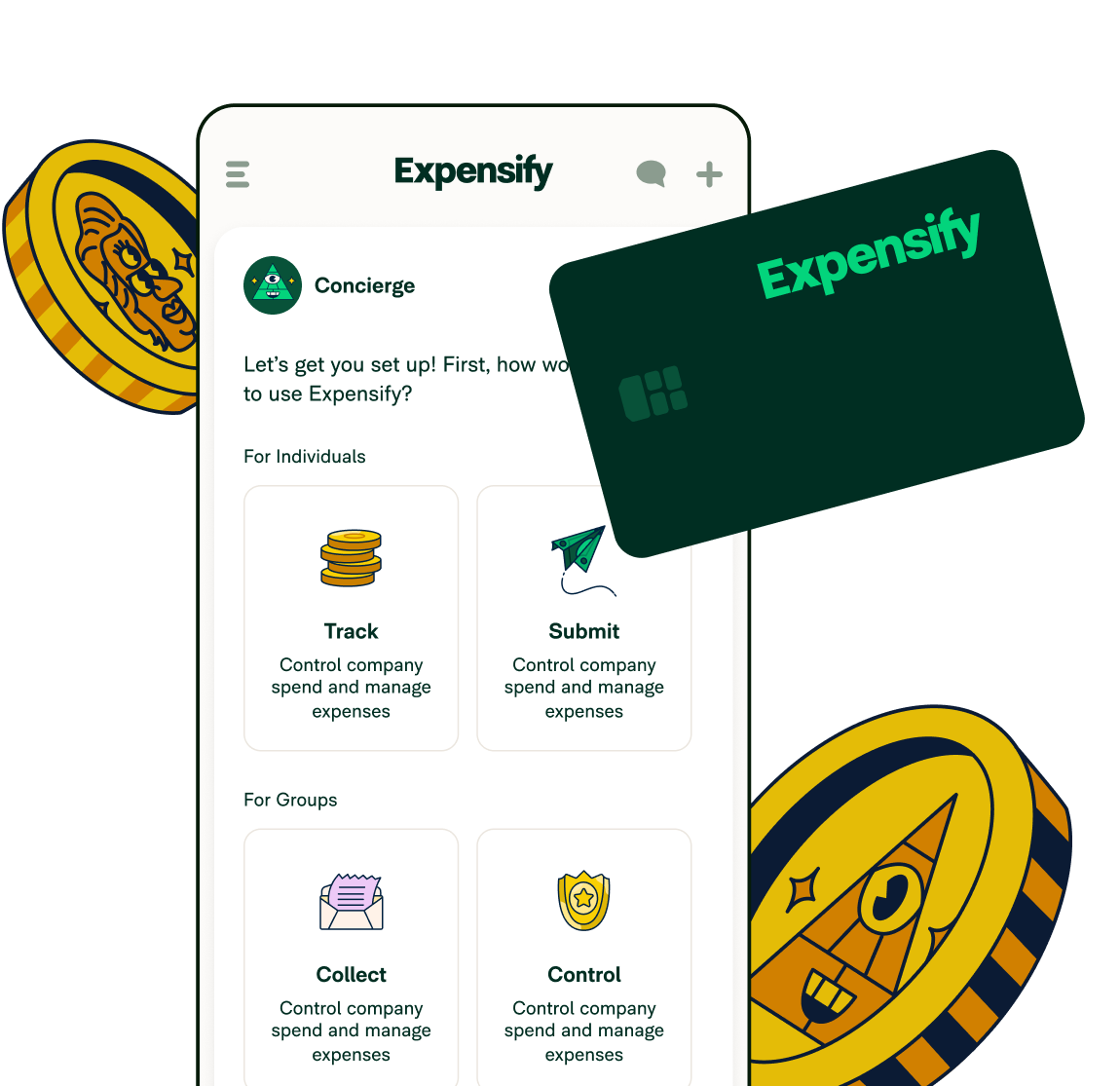The small business guide to automation: Streamline your operations in 2025

What’s the most precious resource for any small business owner? If you answered “time,” give yourself a gold star. Yet, countless hours vanish each week into the black hole of manual processes – expense reports pile up, invoices await approval, and critical operational tasks consume valuable energy that could be spent on growth.
The reality? Small business automation isn't just a luxury anymore. It's a crucial survival tool in today's digital economy. While enterprise companies invest millions in sophisticated systems, small businesses can now access powerful business automation software that levels the playing field.
From automated expense tracking to intelligent workflow management, these tools are transforming how small businesses operate, compete, and thrive – which is exactly what we’ll address in this article. Let’s dive in.
Why your small business needs automation now more than ever
When it comes to automating financial processes, two in every three small-to medium-sized enterprises (SMEs) feel that accounting and bookkeeping software is their most important investment in 2025. The shift toward automation reflects a clear business imperative: manual processes are increasingly costly in both time and resources.
Research on automation with intelligence from Deloitte shows that automation tools deliver measurable benefits:
Businesses report a 15-20% cost reduction in automated processes.
Digital document processing reduces handling time by 30-50%.
Cloud-based automation tools cut IT infrastructure costs by up to 30%.
Companies automate 65% of their expense reporting to reduce processing times.
Beyond cost savings, automation brings other key benefits:
Increased productivity: AI-based automation boosts customer service productivity by 14%, with the biggest impact on novice employees.
Improved accuracy: Implementing workflow automation has led to a 32% reduction in human error for companies, thereby increasing overall productivity and efficiency.
Enhanced customer experience: AI-powered automation reduces service costs by 30%, allowing businesses to handle higher volumes of customer interactions efficiently.
These numbers represent documented improvements in efficiency, translating to real hours saved and resources better spent on growing your business.
The 5 core processes every business should automate
Maximizing efficiency starts with identifying which tasks yield the highest return when automated. These five core processes consistently deliver the strongest impact, helping small businesses reclaim valuable time while reducing errors and costs.
Expense reporting: From receipt to reimbursement
Receipt stuffed in a wallet. Expense report due tomorrow. Sound familiar?
Manual expense reporting drains productivity and creates unnecessary stress for everyone involved. Business automation software transforms this headache into a seamless flow:
Manual vs. automated workflow:
Traditional process: Collecting receipts, manually entering data, chasing approvals, reconciling errors
Automated process: Snap receipt photos, automated categorization, instant routing, realtime reconciliation
Real impact:
Cut processing time from 20 minutes to 2 minutes per report
Eliminate common entry errors
Gain instant visibility into spending patterns
Invoice and payment processing
Late vendor payments and missed early payment discounts hurt your bottom line and vendor relationships. Smart automation turns your accounts payable from a cost center into a strategic advantage:
Key benefits:
Automatic invoice capture and coding
Intelligent payment scheduling
Cash flow optimization through payment timing
Vendor portal access for realtime status updates
Team communication systems
Email overload and endless notification pings kill productivity. Modern workflow automation for small business needs to tackle communication chaos head-on:
Smart automation opportunities:
Project updates automatically routed to relevant teams
Meeting scheduling that respects team availability
Automated task assignments based on project milestones
Cross-platform message synchronization
Payroll and benefits administration
Payroll mistakes cost more than money; they hurt team morale and compliance standing. Here's how automation streamlines this critical function:
Core features:
Automatic time tracking integration
Smart tax calculations and withholdings
Benefits enrollment automation
Compliance documentation tracking
Marketing and business operations
Professional services automation for small business has evolved beyond basic task management. Modern solutions create a cohesive system that nurtures leads, serves customers, and streamlines operations from end to end:
Key automation areas:
Lead scoring and routing
Personalized email sequences
Social media content scheduling
Customer support ticket prioritization
Inventory alerts and reordering
Project resource allocation
Time and billing automation
Marketing automation software for small business adds another layer of efficiency, handling everything from lead nurturing to customer engagement. When these systems work in harmony with your other automation tools, you create a multiplier effect that drives efficiency across your entire operation.
Don't forget travel expense automation
While many automation discussions focus on broad operational systems, travel and expense management often represents a hidden opportunity for significant savings. Smart automation in this area doesn't just save money; it transforms how teams handle business travel and expenses.
End-to-end travel automation
Smart booking tools slash administrative burden and boost efficiency:
Cut booking time from 45 minutes to 5 minutes per trip
Reduce support tickets by automatically handling common travel requests
Save hundreds per employee annually through better rate optimization
Policy compliance made simple
Companies using automated travel and expense tools report:
Higher policy compliance through built-in rules
Fewer expense report errors with automated validation
Faster reimbursements with streamlined approvals
Realtime expense tracking
Mobile apps and automated systems eliminate expense report headaches:
Capture receipts instantly with your phone
Auto-categorize expenses as they happen
Match corporate card transactions automatically
Generate expense reports with a single click
Pro tip: Look for tools that combine travel booking with expense management. This integration eliminates data entry, improves reporting accuracy, and gives you better visibility into total travel spend.
Expensify Travel stands out for small businesses by offering:
Direct flight and hotel booking within the same app you use for expenses
Automatic receipt capture and categorization
Policy controls built into the booking process
Consolidated billing and reporting for all travel expenses
Building your automation strategy
Success with automation isn't about implementing everything at once. It's about making strategic moves that build momentum. Here's how to structure your automation rollout for maximum impact with minimal disruption.
First 30 days: Quick wins
Start with processes that deliver immediate value while building team confidence in automation:
Week 1-2:
Digital receipt capture and expense automation
Basic email autoresponders
Meeting scheduling automation
Week 3-4:
60-day implementation plan
Build on your foundation by connecting systems and expanding automation scope:
Month 2 focus:
Integration between core systems
Advanced workflow triggers
Team training and feedback loops
Process optimization based on early data
90-day optimization goals
Fine-tune your automation ecosystem for maximum impact:
Key objectives:
Cross-platform data synchronization
Advanced reporting capabilities
Custom workflow development
ROI measurement and optimization
Remember: successful automation isn't about speed but about sustainable implementation your team can embrace and optimize over time.
Measuring automation success
Rolling out automation tools is just the beginning. Understanding their impact is crucial for ongoing optimization. Let's explore the key metrics that reveal whether your automation investments are delivering real value.
Key performance indicators (KPIs)
Smart measurement starts with tracking the right metrics:
Time savings:
Minutes saved per task
Total hours recovered monthly
Speed of process completion
Response time improvements
Cost efficiency:
Processing cost per transaction
Labor hours reallocated
Paper and storage savings
Error-related expense reduction
Quality improvements:
Error rate reduction
Policy compliance rates
Customer satisfaction scores
Team productivity gains
ROI calculation guide
Calculate your small business automation ROI with this straightforward approach:
Step 1: Baseline costs
Document current process times
Track error rates and corrections
Note manual intervention frequency
Calculate labor costs per task
Step 2: Post-automation metrics
Measure new process times
Monitor error prevention rates
Track automated vs. manual tasks
Calculate new operational costs
Step 3: Value calculation
Hours saved × average labor cost
Error reduction savings
Productivity gains
Strategic value of freed resources
Employee satisfaction metrics
Happy teams drive successful automation. Track these indicators:
Engagement factors:
Task satisfaction ratings
Time spent on strategic work
Professional development activities
Cross-team collaboration
Productivity measures:
Projects completed on time
Innovation initiatives launched
Client response times
Team capacity for growth work
Pro tip: Create a simple dashboard combining these metrics for monthly review. This helps spot trends and optimization opportunities while keeping your automation strategy on track.
Essential tools to power up your small business automation
Ready to ditch the busy work and focus on what really matters? Here’s a breakdown of the best tools to streamline your operations, categorized by their functions.
1. Expense reporting and travel
Expensify (of course!): Say goodbye to manual expense reports. Snap a receipt or text it to 47777 with your US number, and Expensify takes care of the rest — categorizing, submitting for approval, and syncing with your accounting software.
Bonus: You can book travel directly in the app.
Zoho Expense: A great alternative for receipt capture, mileage tracking, and multi-currency support. Perfect if you’re already using other Zoho tools.
2. Invoicing and payment processing
Expensify: Auto-categorize your expenses and use one of our integrated accounting tools to make accounting a breeze while avoiding late fees and improving vendor relationships.
QuickBooks: A go-to for small business accounting, QuickBooks automates invoicing, payment reminders, and bank reconciliation in one platform. The best part: Expensify integrates with QuickBooks.
3. Team communication and workflow
Slack: More than a chat tool! Use Slack to set up automated notifications, reminders, and task assignments.
Microsoft Teams: Seamlessly integrates with other Microsoft products for workflow automation and collaboration.
Asana: A project management powerhouse that automates task assignments, tracks progress, and keeps your team aligned.
Expensify Chat: Expensify Chat is built for all self-employed professionals and small businesses who want a more efficient and productive way to collaborate with their teams, customers, clients, vendors, and suppliers–all without them having to download the app.
4. Marketing Automation
Mailchimp: Automate email campaigns, audience segmentation, and performance tracking!
HubSpot: A full-fledged marketing automation suite offering tools for email marketing, lead nurturing, and social media management.
ActiveCampaign: Known for its advanced automation capabilities, ActiveCampaign excels at personalizing customer journeys and managing workflows.
5. Other Must-Have Tools
Zapier: Connect your favorite apps to automate workflows without writing a single line of code. For example, save email attachments to Dropbox or create tasks in Asana automatically.
IFTTT (If This Then That): Perfect for more uncomplicated automation like saving Instagram photos to Google Drive or syncing smart devices.
Google Workspace: Use tools like Google Forms for data collection or Sheets for automated calculations to enhance productivity.
Choosing the right tools
Choose automation tools that make the biggest difference right away. Are you drowning in repetitive tasks or uncountable receipts? Struggling with errors? Focus on solutions that address your specific pain points.
Most providers offer free trials, so don't hesitate to test them before committing. And remember, your automation needs will change as your business grows. Regularly review your tools to ensure they're still the best fit for your evolving workflows.
Common automation pitfalls
Even the most promising small business automation initiatives can stumble without proper planning. Understanding these common challenges helps you avoid costly missteps and ensure smooth implementation.
Over-automation risks
Resist the temptation to automate everything at once. Smart automation preserves the human elements that make your business special:
Watch out for:
Removing necessary human oversight
Automating processes that need flexibility
Creating rigid systems that frustrate customers
Missing opportunities for valuable personal interactions
Smart solution: Start with repetitive, rule-based tasks where automation clearly saves time and reduces errors. Keep humans in charge of judgment calls, creative solutions, and relationship building.
Integration challenges
Your tools need to play nicely together. Common integration headaches include some of the following:
Problem areas:
Data silos between systems
Incomplete information transfer
Duplicate entries across platforms
Manual workarounds for gaps
To avoid those pesky problem areas, try these success strategies:
Map out data flows before implementation
Choose tools with proven integration capabilities
Test thoroughly with sample data
Document connection points and dependencies
Change management essentials
New tools only work when your team embraces them. (a.k.a. skip these steps at your peril!)
Critical components:
Clear communication about benefits
Hands-on training sessions
Quick-win demonstrations
Feedback loops for improvements
Implementation tips:
Identify and support team champions
Create simple process guides
Establish a help system for questions
Celebrate early successes
Pro tip: Build a change management checklist for each new automation rollout. Include training plans, communication templates, and success metrics to keep your implementation on track.
Small business automation in the world of AI and machine learning
AI and machine learning are no longer buzzwords but practical tools reshaping how small businesses compete. Understanding these technologies helps you make informed decisions about which solutions truly deliver value for your business.
AI and machine learning integration
Smart AI tools complement your existing small business automation strategy by adding predictive power and intelligent processing:
Practical applications:
Smart expense categorization that learns from your patterns
Automated fraud detection for suspicious transactions
Intelligent invoice processing that improves over time
Receipt scanning that gets more accurate with use
Real benefits:
Reduce manual review time
Catch errors before they happen
Speed up approval processes
Improve reporting accuracy
Scaling your automation
As your business grows, AI helps your automation scale intelligently:
Growth enablers:
Automated data analysis for spending patterns
Smart workflows that adapt to volume changes
Predictive resource allocation
Self-improving process optimization
Implementation focus:
Start with proven AI solutions
Build on existing automation
Monitor accuracy and results
Adjust based on real performance data
Emerging technologies to watch
Keep these promising developments on your radar:
Near-term innovations:
Natural language processing for receipt analysis
Predictive analytics for cash flow management
Automated audit preparation
Smart policy compliance monitoring
Strategic considerations:
Focus on solutions with proven ROI
Look for AI features built into existing tools
Prioritize user-friendly implementations
Consider integration capabilities
The path to automation success is clear: start with core processes, build momentum with quick wins, and expand strategically. Small businesses that embrace automation tools position themselves for sustainable growth and innovation.
Ready to transform your business operations and reclaim valuable time? Explore how Expensify and smart automation can revolutionize your workflow.
Check us out here to learn more, or speak to one of our onboarding specialists on optimizing your business workflows. Embrace the future of business, so yours can continue to flourish.
Common questions about automation for small business
-
A common example is expense management automation. Instead of manually collecting receipts, typing data into spreadsheets, and chasing approvals, automation tools like Expensify let employees snap photos of receipts with their phones. The system automatically extracts the data, categorizes the expense, routes it for approval, and syncs with accounting software—turning hours of work into minutes.
-
AI for small business means practical tools that make work easier and smarter. Think of it as a digital assistant that learns from your business patterns. For example, AI can automatically categorize expenses based on past behavior, flag unusual spending patterns, or predict when you might run low on inventory. It's not about replacing humans—it's about handling routine tasks so your team can focus on growth.
-
While several platforms offer expense automation, Expensify stands out for small businesses by combining powerful features with user-friendly design. Key advantages include:
Smart receipt scanning that actually works
Automatic expense categorization
Built-in travel booking
Policy controls that prevent mistakes
Direct accounting software integration








